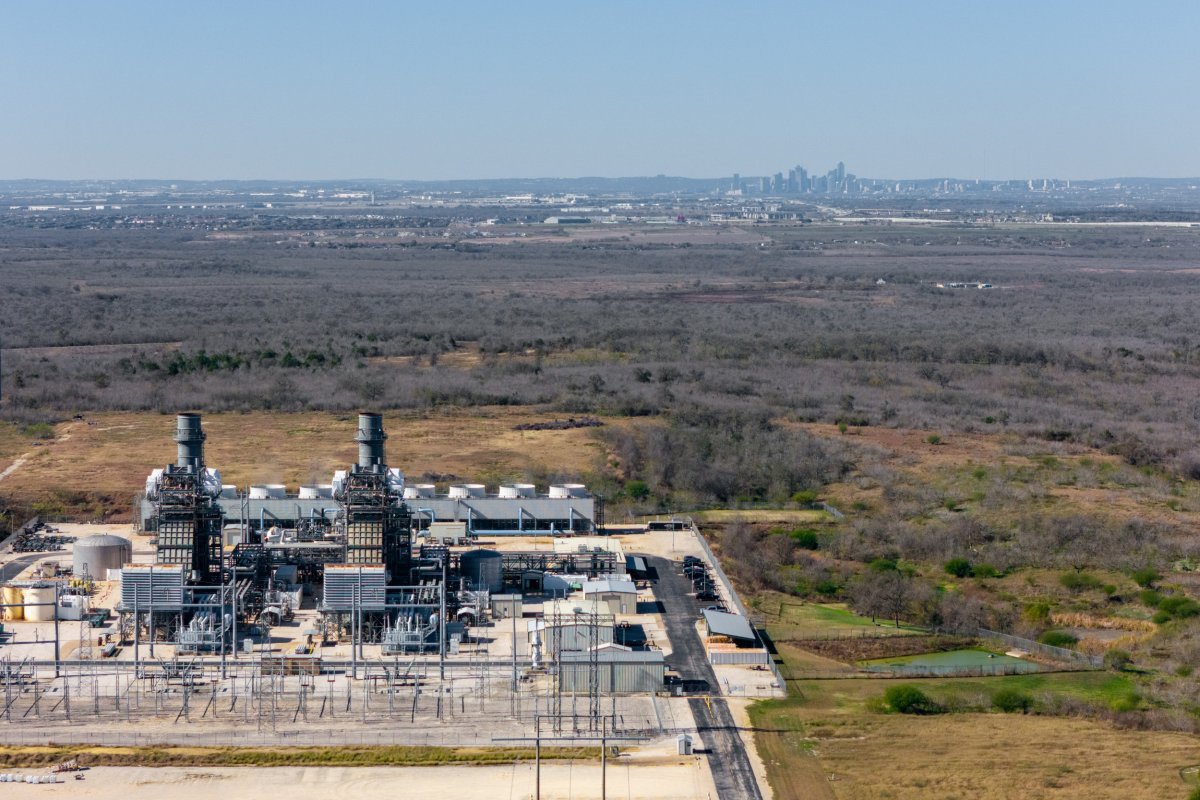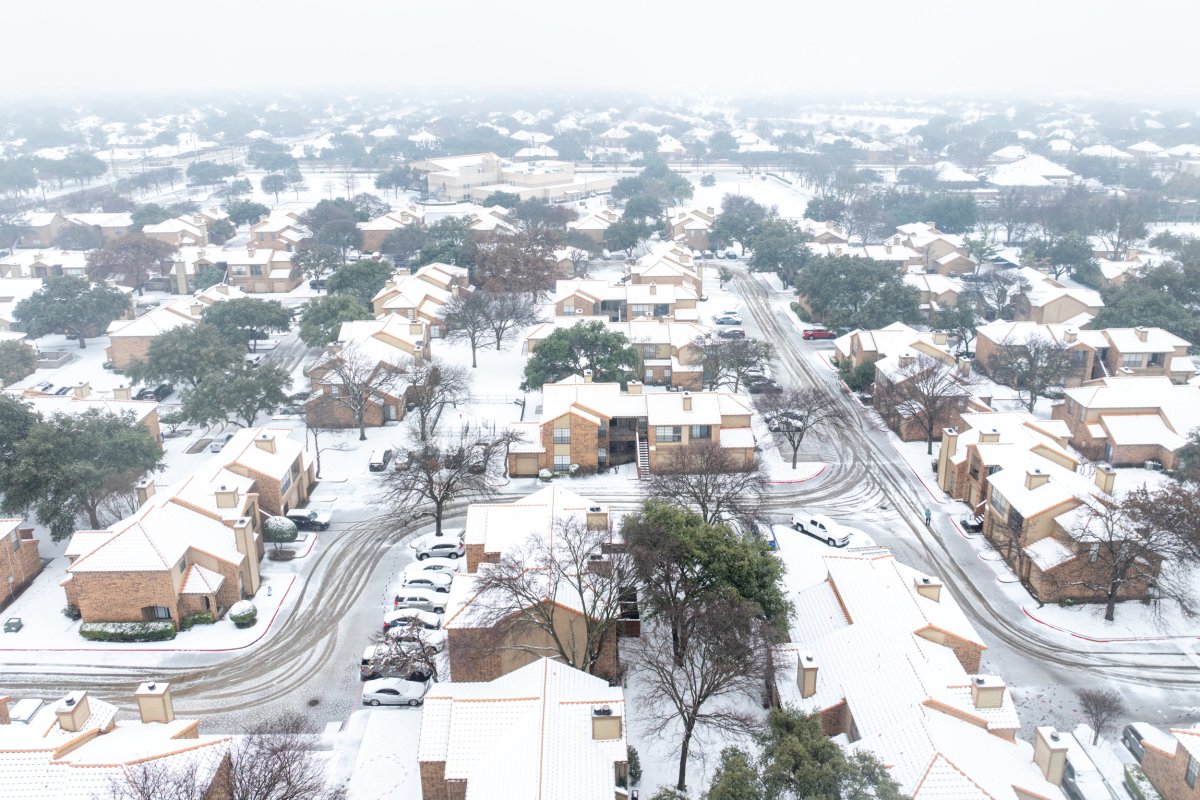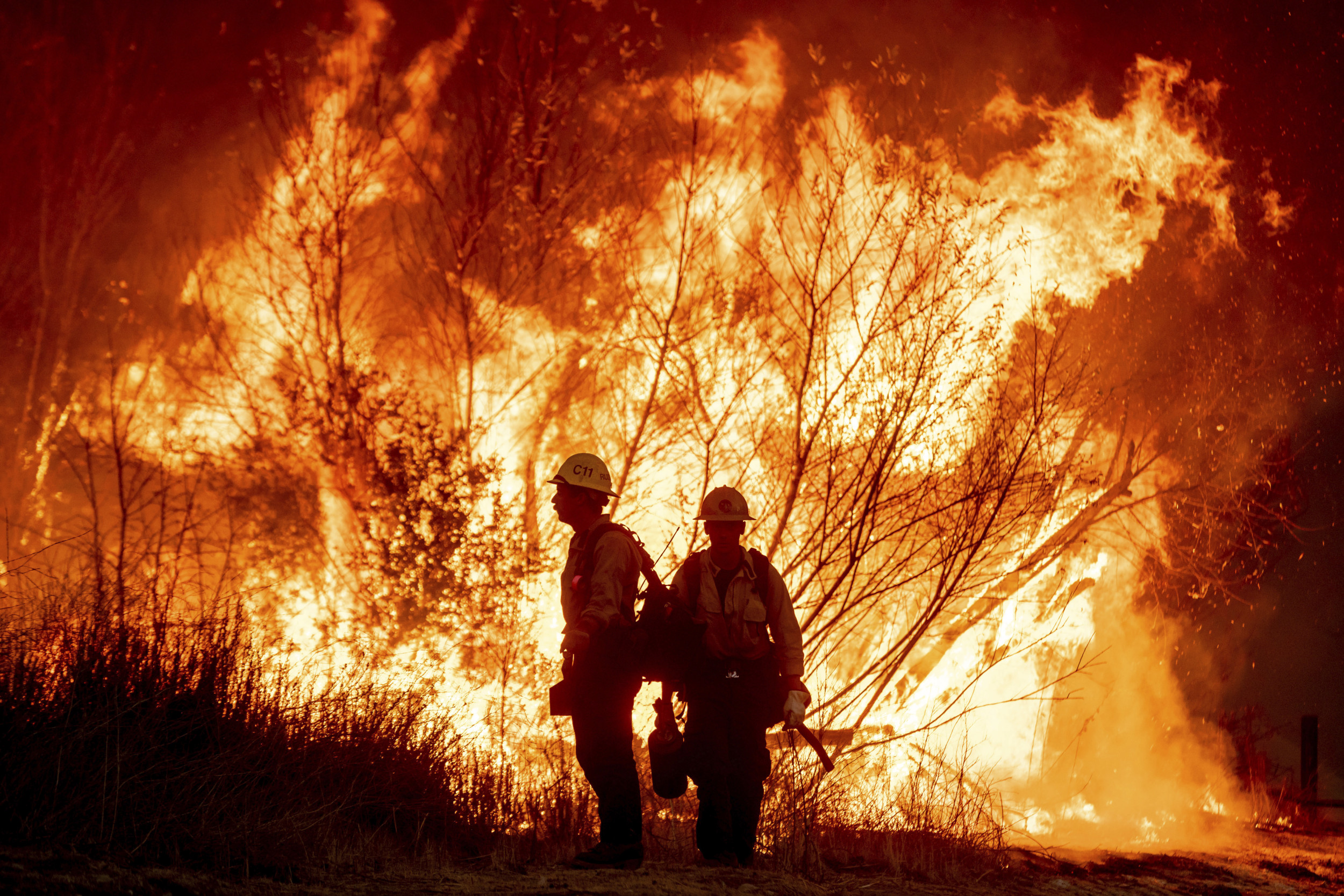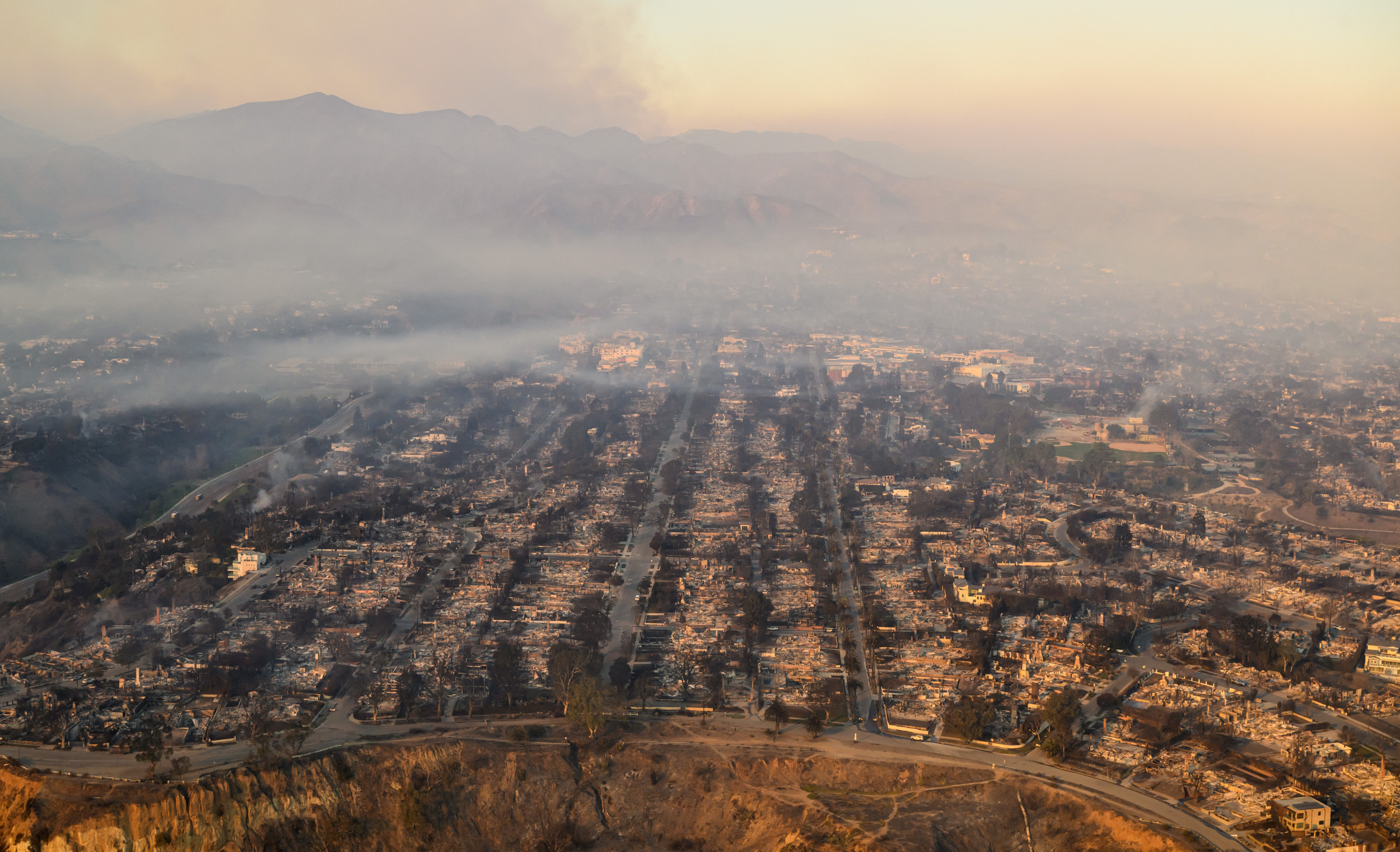The Texas energy grid faces rising demand that could strain resources as the state sits on the cusp of severe winter weather—but Texas is also the best-positioned state to tackle energy issues, an expert told Newsweek.
Newsweek reached out via email on Thursday afternoon to Texas Governor Greg Abbott's office for comment.
The Context
Texas is facing a major storm in the coming days, with 5 inches of snow expected in some parts of the state. Areas north and northeast of the Dallas-Fort Worth metro complex could see up to 8 inches of snow, according to an update from the National Weather Service on Thursday.
States across the central and eastern U.S. have already faced major power outages as tens of thousands of homes endured blackouts following powerful offshore winds.
Texas suffered a grid collapse in 2021 when it could not handle the extreme cold at the various power plants across the state, which has triggered anxiety every year ahead of major winter storms thereafter.
Over the past few years, Texas has utilized a number of tools, including rolling blackouts, as outages threatened various parts of the state, which the Electric Reliability Council of Texas (ERCOT) in previous years has said would occur only in the face of extreme weather storms.

What To Know
Cy McGeady, fellow in the Energy Security and Climate Change Program at the Center for Strategic and International Studies (CSIS) told Newsweek that Texas is a leader in energy development and innovation while acknowledging the state confronts unprecedented growth in demand.
Speaking of the national grid—the rest of the country relying on two vast and interconnected national systems—McGeady noted that the system is "under constant replenishment," with a lot of improvements to transmission, distribution poles and wires, but that some parts that were put in place between the 1960s and 1980s are "due in terms of replacements."
But the U.S. also faces a "new phenomenon of demand growth," which requires not just replacing aging infrastructure but also building "bigger, larger, longer reaching" grids to serve new demand across the country.
McGeady hailed Texas as a leader in that process, saying that the state's power grid "has grown tremendously and ... is sort of undergoing a transformation of the resource mix away from traditional coal, gas, nuclear to a much more heavily reliant on wind, solar, battery storage and natural gas."
Texas has undergone massive growth in the past decade, which accelerated after the novel coronavirus pandemic accelerated a population shift into the state, resulting in the Lone Star State adding two congressional districts after the 2020 census due to a bump of around 4 million new residents since the previous census.

"The amount of people, the amount of economic activity, has grown tremendously," McGeady said, adding later in the conversation that Texas is now seeing high demand for battery manufacturing and data center development due to its particular grid setup, which in turn stresses and tests the power grid.
"Texas has seen population growth and things like the oil and gas industry, the boom in the Permian Basin, and those operations being run by electricity, now increasingly by grid electricity," McGeady explained. "So all of these things are combining to create tremendous demand pressure on the Texas power system."
Texas has maintained its autonomy due to the isolation of its power grid system, which has allowed it to make policy choices without needing to consider the interaction or demands of other states or systems.
But that will continue to increase demand on the system, which the state is debating and trying to navigate as political interests play havoc with the state's policies.
McGeady pointed to the tremendous growth of wind and solar technology deployed in Texas—more than anywhere else and "at a faster rate than anywhere else," according to McGeady—but the Texas State Senate over the past few years allowed a renewable energy program to lapse in favor of new bills favoring fossil fuels, according to The Texas Tribune.
The online news source reported in 2023 that solar farms and wind turbines have greatly proliferated in the state, rivaling California for solar energy and producing more wind than any other state, but said that Texas Lieutenant Governor Dan Patrick favored natural gas as the response to the 2021 grid collapse that struck during a severe winter storm.
Patrick said of the issue that renewable energy was "fine to have, keep energy price low and helps the environment, but you have to have enough dispatchable to meet the needs" of the state. Some Texas state senators called further renewable energy programs a red line they would not vote to support.
What People Are Saying
Governor Abbott on Thursday evening wrote on X, formerly Twitter, that he had directed the Texas Division of Emergency Management (TDEM) to "activate flood response resources ahead of possible heavy rainfall in East and Southeast Texas," adding, "Remember, Texas: Turn Around, Don't Drown."
Abbott also praised the state's power grid, saying that it "continues to operate exceptionally well. There is an abundance of supply to meet the power demands of Texans."
Christi Craddick, member of the Texas Railroad Commission, wrote on X: "$27.3 billion in oil and gas taxes and royalties means stronger schools, safer communities, and better infrastructure across Texas. Thanks to strong, conservative leadership, Texas energy keeps delivering for our state. Let's keep Texas thriving!"
What Happens Next
The winter vortex expected to hit the state this weekend will test whether the changes implemented following the 2021 grid collapse are effective. With around a half a foot of snow predicted, along with freezing winds and temperatures, state officials assert they are ready to deal with the high demand.




















 English (US) ·
English (US) ·